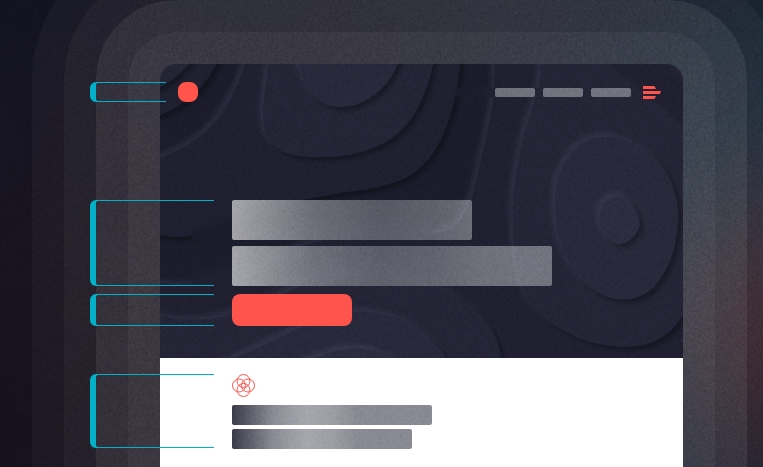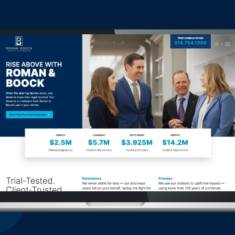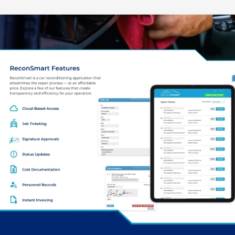6 Tactics for an Effective Landing Page Strategy
12.13.22
Visiting websites has easily become a part of our daily routines. People will land on various pages, whether hidden on a website or not, and may not realize they actually encountered a landing page based on their recent search. As one of the most effective ways to gain conversions, landing pages are a great vehicle for businesses to drive traffic, improve SEO and achieve campaign goals. However, many businesses do not fully explore the immense benefits a landing page strategy will have on their marketing efforts.
Paradigm is here to guide your business as you refine your landing page strategy with six tactics that will help effectively funnel traffic and drive conversions.
Defining a Landing Page
A landing page is a standalone web page, designed for a promotional effort or marketing campaign centered around one conversion. Conversions are actions you want your customers to take on your website and may include form submissions, click-to-call or a completed purchase from your online store. Landing pages contain lead forms that help gather information in exchange for an offer, such as a discount code, exclusive ebook or another item of value.
Why Have a Landing Page Strategy
Your website offers multiple opportunities for a visitor to convert, but a landing page only presents your audience with one goal to act on. A landing page strategy simplifies their decision making process and gives them immediate access to what they may have been searching for.
For example, the homepage may seem like an ideal location to funnel traffic — blocks of content may allow you to feature a specific product or service. However, many visitors may get distracted by the other content, links to other pages and graphics present on the already busy page. Simply put, a standard web page is full of distractions.
A landing page eliminates distractions and narrows the focus to one conversion. It also gives your business the opportunity to zero in on keywords, audience metrics and overall page performance.
6 Tactics for Stronger Landing Pages
While every landing page strategy should be unique to each business offering, here are six key tactics that you should keep in mind before developing a strategy:
1. Target Multiple Diverse Audiences
A landing page strategy that includes multiple landing pages for specific events has the ability to increase leads by hyper-targeting potential consumers — further reaching multiple segments of your audience.
According to Hubspot, companies who increase their landing page strategy to include 10-15 distinct landing pages see a 55% increase in leads compared to companies with less. Each page may include a different call-to-action that aligns directly with users’ searches — making them more likely to convert on your landing page.
2. Focus on SEO
When you build a landing page, it should include keywords that target the desired audience. This gives your landing page the ability to rank higher on Google’s search engine results pages (SERPs). Center your landing pages around an SEO strategy that includes keywords with a low difficulty and a high volume of people searching for those words. This will help attract a stream of more qualified leads to your landing page.
3. Write Concisely
Writing concisely for a landing page is the best method in developing a high-performing strategy. Copy has to meet the needs of both the human visitor who will interact with your offering and the search engine robot who helps direct people to your landing page. Satisfying both requires content with a balance of succinct word choices, relevant keywords and a consistent structure of bold headers and a clear calls-to-action.
4. Define a Clear Call-To-Action
Your call-to-action (CTA) is the most important part of your landing page since it prompts your target audience to take a desired action. It may be as simple as enticing the visitor to “Contact Now” or “Subscribe to our Blog” in your button’s copy, but there is still room for personalization. A personalized CTA like “Sign Me Up” speaks to your audience directly and has the ability to perform 202% better than basic CTAs such as “Sign Up” or “Register Today.”
Keeping your landing page CTAs clear, personalized and focused on your conversion goal will gain both your audience’s attention and their clicks.
5. Develop a Simple Design
Landing pages are meant to be a stripped down version of your website’s current pages, but each one you create still needs to reflect the overall integrity of your brand. A landing page that features design elements such as bold typography in the headline, simplified imagery, brand colors, your logo and a clear CTA will connect with your target audience faster. Many landing pages also remove the navigation bar from their design to further limit distractions and keep the target audience focused on the desired action.
6. Track Landing Page Progress
Tracking analytics with Google Analytics 4 gives insight into consumer interactions with advanced engagement metrics that will help guide your business plan over time. By creating a landing page strategy, your business will be able to track and assess if your target audience is landing on your page, interacting with it through how much time they spend on your landing page and converting by clicking on your call-to-action buttons. These metrics not only show you how your page is performing, but it will also tell you where you may be able to improve.
Find Your Strategy with Paradigm
Landing pages are an important component of digital marketing. Whether your goal is to gather email addresses, draw buyers to purchase a ticket or promote a new product, building quality landing pages will help generate new leads for your business.
Contact our team today to formulate your business’s landing page strategy.


